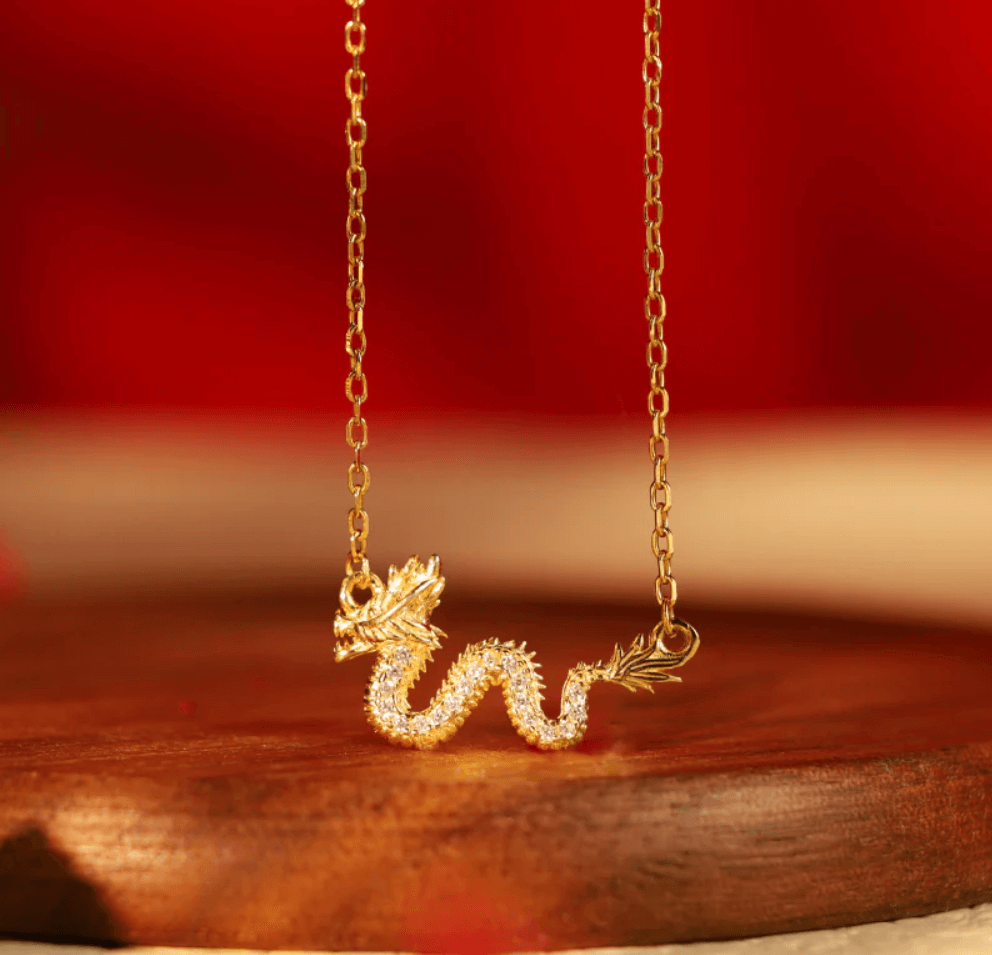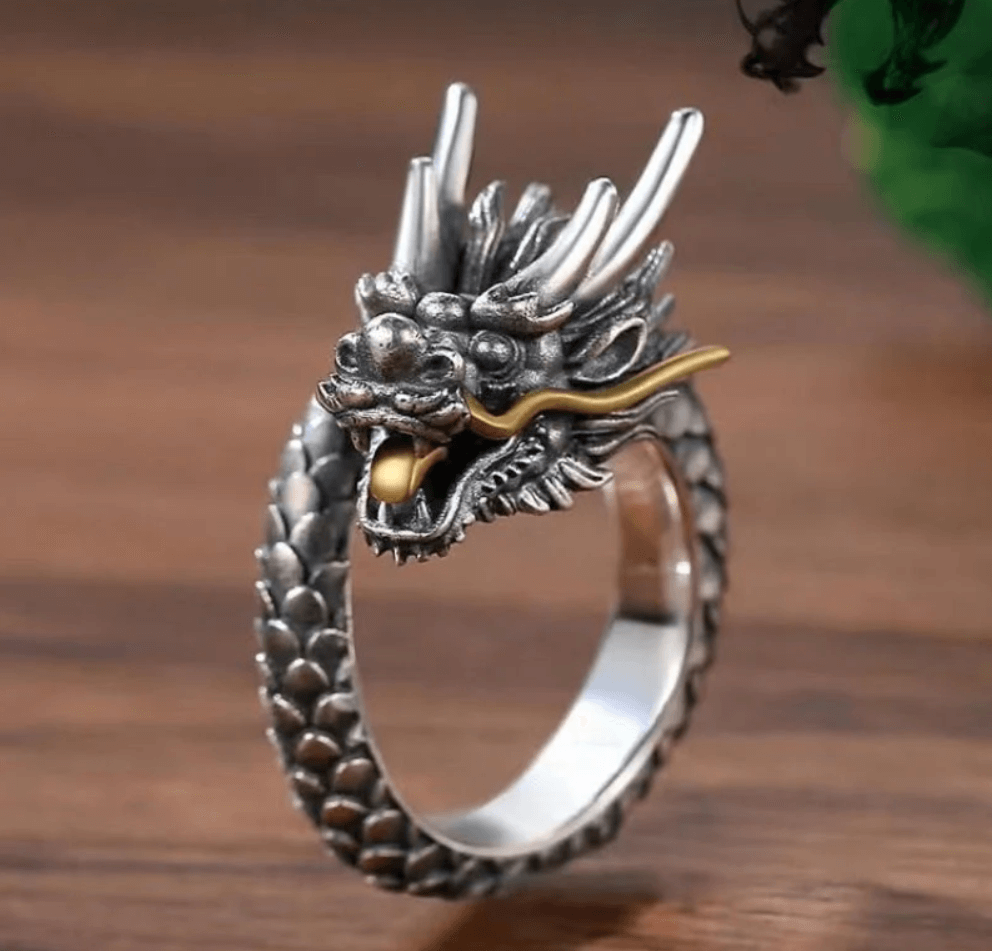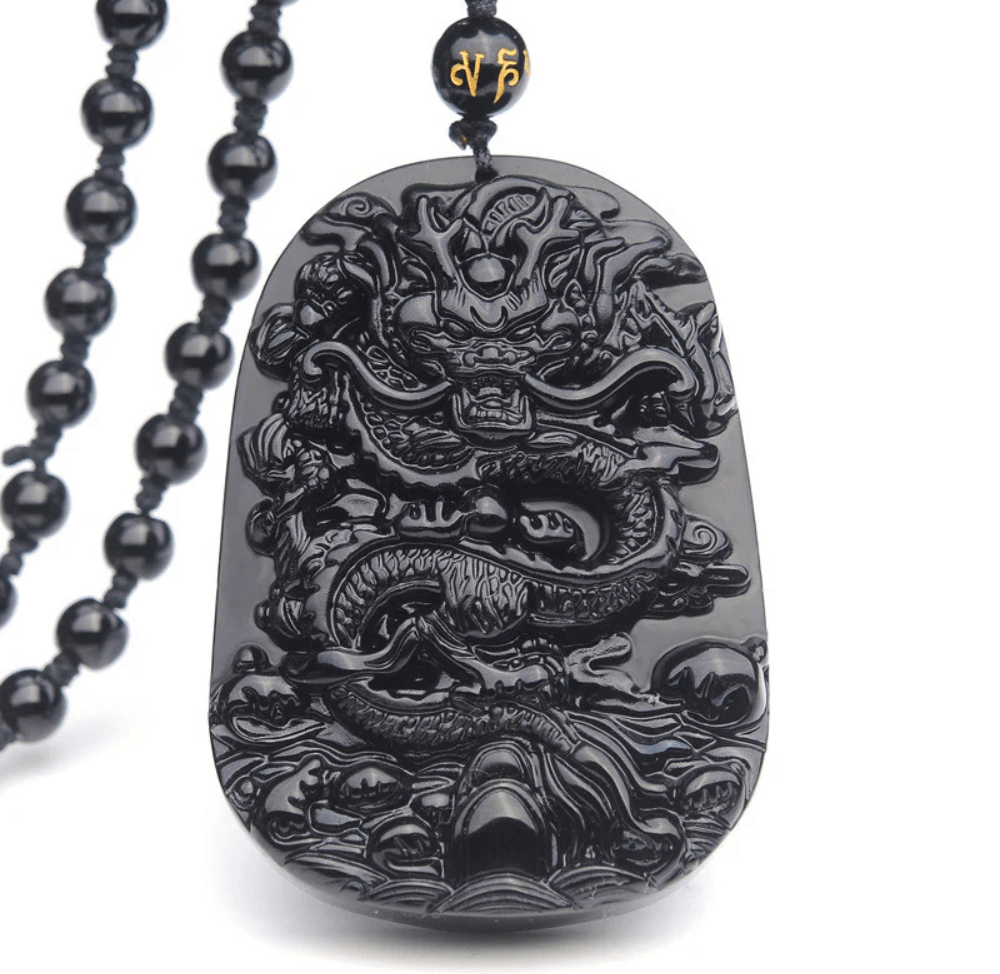Oriental Spiritual Rhythm Through Time and Space: The Cultural Epic of the Chinese Dragon
2025-05-12
Introduction: The Cross-Cultural Search for Mystical Symbols
In the vast scroll of human civilization, the dragon has always been a fascinating and mysterious symbol. While dragons can be found in cultures all over the world, the Chinese dragon, with its unique image and connotation, has written a legend spanning thousands of years. It has been hovering between the lines of ancient bronzes and shining in the creation of modern digital art; it is the spiritual totem of the Chinese nation and has gradually become an important link in the world's cultural exchanges. Today, let's embark on this cultural journey to explore the marvelous journey of the Chinese dragon from ancient totem to global cultural symbol.
1.Ancient Totems: The Birth of Nature Worship and the Integration of Civilization
In the vast scroll of human civilization, the dragon has always been a fascinating and mysterious symbol. While dragons can be found in cultures all over the world, the Chinese dragon, with its unique image and connotation, has written a legend spanning thousands of years. It has been hovering between the lines of ancient bronzes and shining in the creation of modern digital art; it is the spiritual totem of the Chinese nation and has gradually become an important link in the world's cultural exchanges. Today, let's embark on this cultural journey to explore the marvelous journey of the Chinese dragon from ancient totem to global cultural symbol.
1.Ancient Totems: The Birth of Nature Worship and the Integration of Civilization
The origin of the Chinese dragon can be traced back to the Neolithic period, and is closely related to the ancestral people's reverence for the power of nature. In ancient societies, where science and technology were not yet developed, the unexplained wind, rain, thunder and lightning, floods and tides were visualized as mysterious totemic images. The stone pile-plasticized dragons unearthed at the Chahai site in Liaoning (about 8,000 years old) and the clam-plasticized dragons in Puyang, Henan Province, show the connection between dragons and aquatic creatures such as snakes and crocodiles in the early period, reflecting mankind's reliance on and adoration of water as the source of life.
With the exchange and integration between tribes, the image of the dragon evolved continuously. Different tribes will be their own worship of animal features into it: antlers symbolize auspiciousness, eagle claws on behalf of the strength, fish scales mean toughness. This process of integration is similar to the formation of the Chinese nation's unity in diversity -- the dragon is not only a collection of animal features, but also a symbol of the harmonious coexistence of different cultures, which has been sublimated from a tribal totem to the spiritual identity of the entire nation.
2.A Thousand Years of Evolution: Aesthetic Expressions in Changing Times
3.Spiritual Kernel: The Figurative Expression of Oriental Philosophy
2.A Thousand Years of Evolution: Aesthetic Expressions in Changing Times
The image of the Chinese dragon is not static, but presents distinctive aesthetic characteristics with the development of the times. During the Shang and Zhou Dynasties, dragons were often used as bronze decoration, outlined by abstract and mysterious lines, full of religious rituals, such as the jade dragon in the tomb of Wuhao to show the solemnity and majesty; during the Qin and Han Dynasties, the Great Unification Dynasty gave dragons a majestic and atmospheric style, often combined with clouds and flames to symbolize the imperial power and strength; during the Tang and Song Dynasties, dragons tended to be realistic and elegant in shape, with antlers on their heads and scales delicately carved to reflect the prosperity of the arts; during the Ming and Qing Dynasties, dragon decoration reached its peak, with five-clawed golden dragons becoming exclusive to the emperors. Dragon decoration reached its peak, five-clawed golden dragon became exclusive to the emperor, the National Palace of China's Taihe Temple of the dragon chair dragon pillar to the complex process to highlight the majesty of the Royal Family.
3.Spiritual Kernel: The Figurative Expression of Oriental Philosophy
The deep value of the Chinese dragon lies in the philosophical thought and national spirit it carries. In Taoist thought, the dragon's ability to be hidden and visible, and its infinite changes allude to the wisdom of “Taoism and nature”; in Confucian culture, the legend of the dragon assisting Dayu in curing the water interprets the spirit of “benevolence and love for others”. In Confucian culture, the legend of the dragon helping Dayu to cure the water explains the spirit of “the benevolent loves others”. The first hexagram of the I Ching, “Qian Gua”, uses lines such as “the submerged dragon should not be used” and “the flying dragon is in the sky” as a metaphor for the different states of the dragon in the context of life, which demonstrates the dialectical thinking of oriental philosophy.
In literature and art, the dragon is an eternal theme. In Journey to the West, the Dragon King of the Four Seas is in charge of wind and rain, which not only embodies the imagination of nature, but also sends the expectation of smooth wind and rain; in calligraphy, “the dragon jumps through the gate of heaven” describes the majestic strokes; in painting, the cloud and dragon diagrams in ink and wash show the divine charm; and dragon carvings on buildings, such as the nine-dragon wall of the Forbidden City, perfectly combine practical functions with cultural symbolism.
4.Life imprints: cultural genes that permeate the everyday
4.Life imprints: cultural genes that permeate the everyday
Dragon culture is deeply integrated into the daily life of Chinese people. In traditional festivals, the Dragon Boat Race at the Dragon Boat Festival symbolizes unity and progress, and the Dragon Dance at the Chinese New Year signifies the expulsion of evil spirits and the promotion of good fortune; in folk customs, the “scops owls” (dragon-shaped decorations) on both ends of the roof ridge when a house is being built subdue evil spirits, and the silver locks with dragon motifs worn by babies convey the wish for safe and sound growth; and the embroidery of the dragon motifs on traditional costumes not only reveals the identity of the person, but also conveys good fortune.
Different regions have also developed unique dragon cultures. In Fujian, the “Dragon Lantern Walking Formation,” hundreds of lanterns form a complex formation, demonstrating the wisdom of the team; in Guizhou, the “Dragon Dance” of the Miao people combines dance with rituals to express reverence for nature. These customs are not only recreational activities, but also cultural ties that sustain ethnic emotions.
5.Dragon Jewelry: A Fashionable Expression of Cultural Heritage
5.Dragon Jewelry: A Fashionable Expression of Cultural Heritage
Dragon jewelry is a perfect blend of culture and fashion. In Chinese weddings, brides wear dragon-shaped gold jewelry to signify the harmony of husband and wife and the prosperity of the family; in business occasions, men wear dragon-printed cufflinks to highlight the calm atmosphere; jade carved dragon pendants, with a warm texture to convey the pursuit of the character of the “gentleman as jade”. As a gift, dragon jewelry carries deep emotions: parents give dragon jade pendants to express their hope for their children's success; friends give each other dragon jewelry to express their wishes for progress together.
From the material point of view, gold dragon jewelry symbolizes wealth, silver jewelry means peace, jade carving contains oriental aesthetics. These jewelry pieces are not only decorative, but also wearable cultural symbols that bring tradition to life in modern life.

6.Wearing significance: beyond the decoration of spiritual support

6.Wearing significance: beyond the decoration of spiritual support
The significance of wearing dragon jewelry goes far beyond the decoration itself. For the Chinese, the majestic image of the dragon inspires courage and confidence in the face of challenges, and its cultural connotations reinforce a sense of national identity. From a traditional feng shui perspective, dragons are regarded as auspicious beasts, and wearing dragon jewelry is believed to improve one's aura and bring good luck - for businessmen who wish to see their careers take off, and for students who wish to succeed in their studies - a faith-based approach that embodies people's aspirations for a better life.
In international cultural exchanges, dragon jewelry has become a bridge of cultural communication. Foreign friends wearing dragon jewelry is not only the appreciation of oriental aesthetics, but also the recognition and respect of Chinese culture.

7.Chinese Dragons on the World Stage: Cultural Fusion and Innovative Development
Under the wave of globalization, Chinese dragon culture is intermingling and developing with world culture in an open and inclusive manner. In the field of international art, more and more creators draw inspiration from Chinese dragon culture. French artists combine the flowing lines of Chinese dragons with Impressionist painting techniques to create unique oil paintings; American sculptors use metal materials to create modern dragon installations, which are displayed in city squares, attracting countless viewers to stop and admire. These cross-cultural artistic creations have brought Chinese dragon culture to the world in a novel way.
Academic exchanges have also built a broad platform for the dissemination of Chinese dragon culture. At the International Sinology Symposium, scholars have discussed in depth the historical origin and philosophical connotation of Chinese dragon culture. Overseas colleges and universities have opened thematic courses on Chinese dragon culture to help students understand the important role of dragon culture in the shaping of the spirit of the Chinese nation through the interpretation of literature and art appreciation. In such an academic atmosphere, the deep value of Chinese dragon culture is recognized and understood by more people.
The commercial sector has also become an important venue for the spread of Chinese dragon culture. Italian luxury brands have launched a series of dragon patterned silk clothing, which is a perfect fusion of oriental elements and western fashion; Japanese animation companies have produced animated dramas featuring Chinese dragons, which have been popularly broadcasted on streaming platforms around the world and gained a large number of fans. These business cooperation not only realizes economic value, but also brings Chinese dragon culture into the daily life of people all over the world.
With the development of digital technology, the dissemination of Chinese dragon culture has been constantly innovated. Virtual exhibitions allow audiences around the world to enjoy the exquisite details of Chinese dragon cultural relics through the Internet; 3D animation technology gives a new visual experience to the traditional dragon story; and in the meta-universe space, digital art works on the theme of Chinese dragons have become a new carrier for cultural exchanges. These innovative practices have revitalized the ancient Chinese dragon culture in the digital age, and have become a shining business card for the world to understand Chinese culture.
Conclusion: A Timeless Eastern Legend
From a mounded totem in the Neolithic Age to an innovative symbol in global cultural exchanges, the Chinese dragon has always evolved with great vitality. It is not only the spiritual totem of the Chinese nation, but also a unique and brilliant presence in the world's cultural diversity. In the era of cultural integration, the Chinese dragon will continue to tell the story of China and convey the wisdom of the East in an inclusive and innovative manner, contributing its unique power to the development of human civilization.

7.Chinese Dragons on the World Stage: Cultural Fusion and Innovative Development
Under the wave of globalization, Chinese dragon culture is intermingling and developing with world culture in an open and inclusive manner. In the field of international art, more and more creators draw inspiration from Chinese dragon culture. French artists combine the flowing lines of Chinese dragons with Impressionist painting techniques to create unique oil paintings; American sculptors use metal materials to create modern dragon installations, which are displayed in city squares, attracting countless viewers to stop and admire. These cross-cultural artistic creations have brought Chinese dragon culture to the world in a novel way.
Academic exchanges have also built a broad platform for the dissemination of Chinese dragon culture. At the International Sinology Symposium, scholars have discussed in depth the historical origin and philosophical connotation of Chinese dragon culture. Overseas colleges and universities have opened thematic courses on Chinese dragon culture to help students understand the important role of dragon culture in the shaping of the spirit of the Chinese nation through the interpretation of literature and art appreciation. In such an academic atmosphere, the deep value of Chinese dragon culture is recognized and understood by more people.
The commercial sector has also become an important venue for the spread of Chinese dragon culture. Italian luxury brands have launched a series of dragon patterned silk clothing, which is a perfect fusion of oriental elements and western fashion; Japanese animation companies have produced animated dramas featuring Chinese dragons, which have been popularly broadcasted on streaming platforms around the world and gained a large number of fans. These business cooperation not only realizes economic value, but also brings Chinese dragon culture into the daily life of people all over the world.
With the development of digital technology, the dissemination of Chinese dragon culture has been constantly innovated. Virtual exhibitions allow audiences around the world to enjoy the exquisite details of Chinese dragon cultural relics through the Internet; 3D animation technology gives a new visual experience to the traditional dragon story; and in the meta-universe space, digital art works on the theme of Chinese dragons have become a new carrier for cultural exchanges. These innovative practices have revitalized the ancient Chinese dragon culture in the digital age, and have become a shining business card for the world to understand Chinese culture.
Conclusion: A Timeless Eastern Legend
From a mounded totem in the Neolithic Age to an innovative symbol in global cultural exchanges, the Chinese dragon has always evolved with great vitality. It is not only the spiritual totem of the Chinese nation, but also a unique and brilliant presence in the world's cultural diversity. In the era of cultural integration, the Chinese dragon will continue to tell the story of China and convey the wisdom of the East in an inclusive and innovative manner, contributing its unique power to the development of human civilization.


